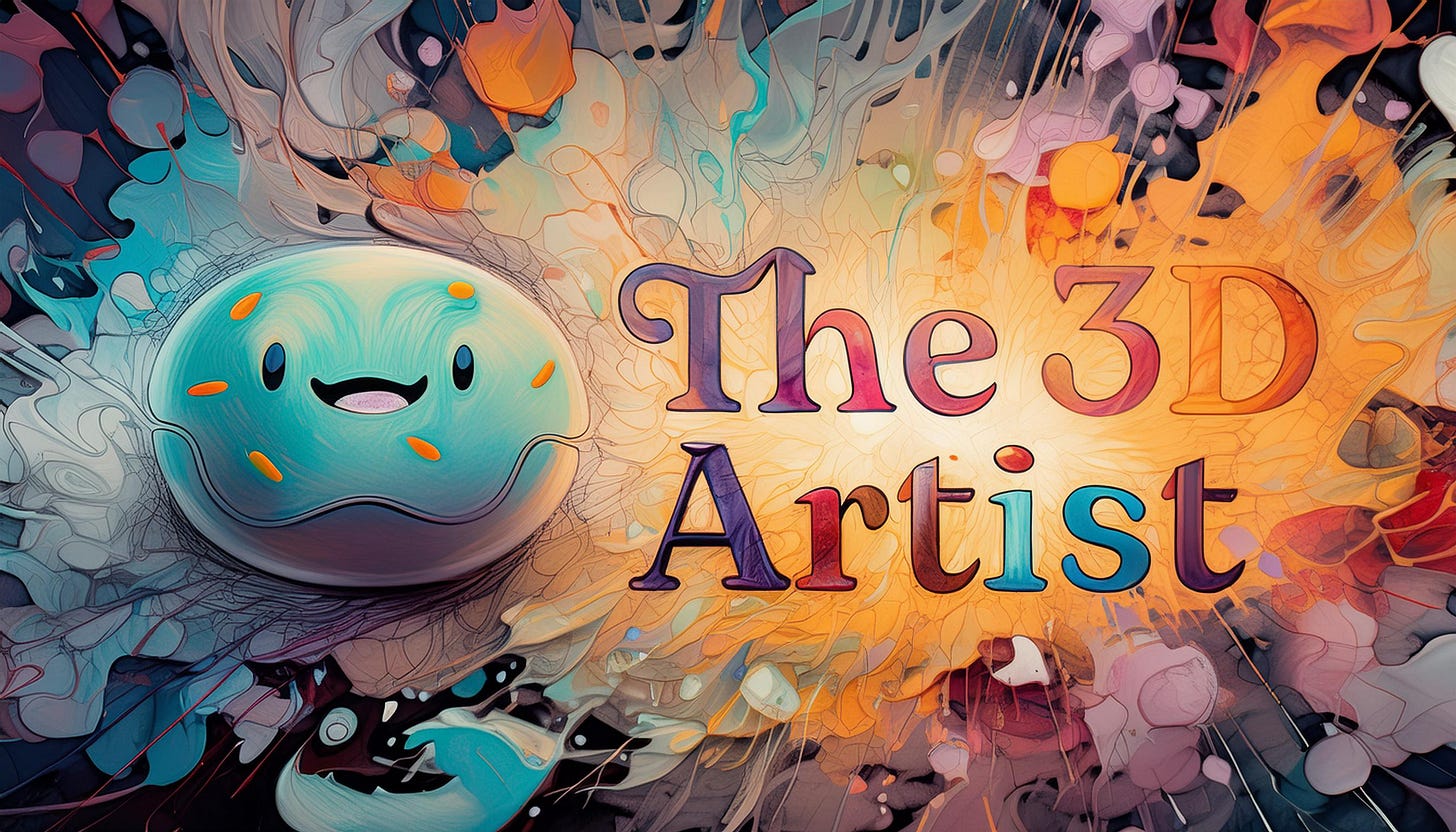3D Artists: Utilizing Reference to Unlock Your Personal Aesthetic
Harnessing Reference Imagery to Develop Your Own Artistic Aesthetic
Whenever I’m asked to critique someone’s work, the first question I ask is, “What did you use as a reference for this project?”
Gathering and processing reference imagery is a fundamental step in drawing, painting, sculpting, modeling, texturing, or designing a website. It allows you to explore your initial idea and helps refine the visual goals of your creation.
The question I often get when explaining this workflow is:
“Isn’t that just copying someone else? What do I even do with that? How do I use reference images to develop my work?”
I say it’s not only a way to develop your work but also a way to create your own unique style.
I’ve answered this question many times over the years, but I think the best response came from Jeremy Postell during his recent AMA session in The 3D Artist Community. Jeremy is a Lead Motion Artist at Apple, and this was his answer to how he developed his style of Motion Graphics early in his journey.
Jeremy Postell, Lead Motion Designer at Apple
His entire interview was phenomenal, offering incredible advice and inspiration throughout (I even signed up for a motion graphics course afterward). However, I want to highlight one particular insight.
For him, the key is breaking down an image you love to its fundamental components. It’s not just about liking an image but understanding why you like it. What are the elements that draw you in? In his workflow, he focuses on line, color, and texture.
When he looks at another artist’s work, he never takes reference from the entire image. Instead, he draws inspiration from one of those three components, helping him identify what he likes. The unique combination of these individual styles helps define your aesthetic style.

Jeremy evaluates based on line, color, and texture. I use a similar method but with a different focus. I like to look at color, light/shadow quality, surface quality, and composition because these are the aspects I want to refine and deconstruct in a piece of artwork. You will develop your own criteria for evaluating based on the most important elements in your work.
As you approach your next project, don’t skip the reference process. It’s crucial. Practice breaking down an image to its core components and pulling inspiration into your work. This will help you hone your eye, develop better aesthetics, and ultimately create your unique style.
The 3D Artist Community Updates!
Updates:
We had our first round of Blender Awesomeness with our own Kursad Karatas. Kursad is a 3D Generalist with 25+ years of experience and a fantastic teacher. In this first session, he answered community members’ questions about beveling, render settings and workflows, and creating assets for apparel design.
Last week, we had an inspiring AMA with Apple's Lead Motion Artist, Jeremy Postell. Jeremy gave incredible insights into his journey from his first job to Nike to Adidas and Apple. I highly encourage anyone in the community to watch the recording.
As always, we have our Virtual Café and Community Hangout for all our members to get together and collaborate.
3D News of the Week
Feather 1.5 is released - 80.lv
How to Make a Conceptual Drawing of a Running Shoe Explained Step by Step - LinkedIn
VR stylus for digital art and design - Creative Bloq
Logitech lauches MX Ink Mixed Reality Stylus - YouTube
See Whiskytree’s VFX breakdown for ‘Masters of the Air’ - Before & Afters
10 essential tips for crafting a successful demo reel - CG Channel
The best explanation of UV unwrapping I’ve ever seen - Instagram
3D Merch is here!
3D Tutorials
3D Job Spreadsheet
Link to Google Doc With A TON of Jobs in Animation (not operated by me)
Hello! Michael Tanzillo here. I am the Head of Technical Artists with the Substance 3D Growth team at Adobe. Previously, I was a Senior Artist on animated films at Blue Sky Studios/Disney with credits including three Ice Age movies, two Rios, Peanuts, Ferdinand, Spies in Disguise, and Epic.
In addition to his work as an artist, I am the Co-Author of the book Lighting for Animation: The Visual Art of Storytelling and the Co-Founder of The Academy of Animated Art, an online school that has helped hundreds of artists around the world begin careers in Animation, Visual Effects, and Digital Imaging. I also created The 3D Artist Community on Skool and this newsletter.
www.michaeltanzillo.com
Free 3D Tutorials on the Michael Tanzillo YouTube Channel
Thanks for reading The 3D Artist! Subscribe for free to receive new posts and support my work. All views and opinions are my own!







